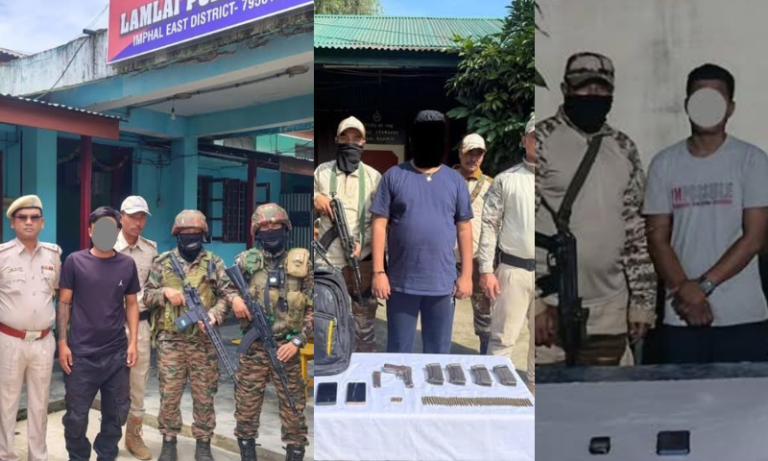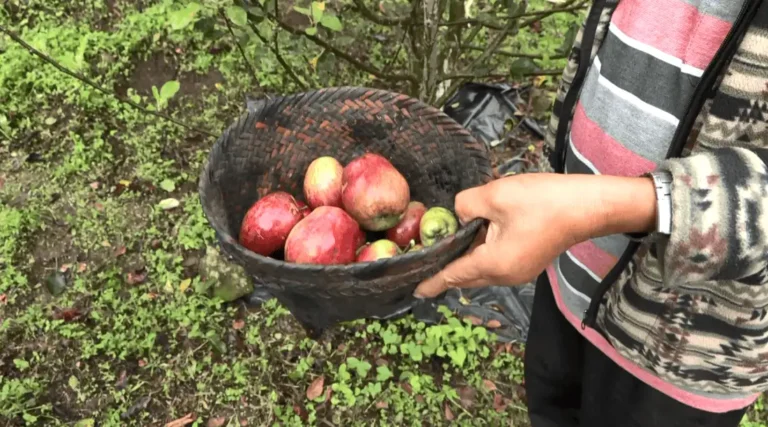The Revival of Manipuri Cinema: Brojendragee Luhongba Screening Marks the Start of a New Era
Summary
The screening of Brojendragee Luhongba at the Manipur State Film Development Society (MSFDS) on Sunday marked the beginning of a series showcasing restored classic Manipuri films. As the first full-length feature film directed by a Manipuri filmmaker, Brojendragee Luhongba holds a special place in the state’s cinema history. With themes challenging traditional norms, the film presents a revolutionary take on gender dynamics, making it a cultural and cinematic milestone in Manipuri cinema.
The Historical Significance of Brojendragee Luhongba
Manipur has a rich cultural heritage, and its cinema is no exception. The screening of Brojendragee Luhongba at the MSFDS Palace Auditorium wasn’t just another movie night — it was the revival of Manipuri cinema’s deep roots. This film, originally directed by the multifaceted S.N. Chand, was a turning point in the region’s cinematic history. The movie’s reintroduction comes as part of the newly launched series by the SN Chand Cine Archive and Museum (SNCCAM) aimed at restoring classic Manipuri films and bringing them back into the spotlight.
Exploring Themes of Tradition and Modernity
What makes Brojendragee Luhongba unique is not just its position as one of the earliest Manipuri feature films, but its thematic content. Chand, who directed, acted, wrote, and composed music for the film, masterfully navigates the tension between tradition and modernity, with a particular focus on gender roles. At the heart of the film lies a progressive message, one that subtly critiques the patriarchal structures deeply ingrained in Manipuri society. The character of Maloti, a neglected wife, is central to this narrative, symbolizing the struggles of women caught between traditional expectations and the desire for personal freedom.
Chand’s nuanced approach to gender dynamics ensures that the film remains relevant even today. Brojendra, the male lead, initially appears as the archetypal traditional hero but becomes a vehicle for addressing issues of male arrogance and the need for women’s emancipation. The film, through its storyline and character arcs, challenges long-held societal norms, making it a quiet yet powerful feminist statement.
Chand’s Vision: A Cinematic Masterpiece
S.N. Chand wasn’t just a director — he was a visionary who saw the potential of Manipuri cinema to reflect and influence society. His decision to shoot Brojendragee Luhongba entirely on location in Manipur, rather than in Calcutta’s established studios, added authenticity to the film. This move set a precedent for future filmmakers, emphasizing the importance of capturing the true essence of local life on screen.
From a technical standpoint, Chand’s use of innovative cinematography techniques, such as tracking shots from inside a moving vehicle, pushed the boundaries of what was possible with the limited resources available at the time. These cinematic innovations gave the film a modern feel, despite its roots in traditional storytelling.
The Cultural Impact of Brojendragee Luhongba
Though Brojendragee Luhongba narrowly missed being the first-ever Manipuri feature film, its cultural impact has been undeniable. Over the years, it has become a symbol of Manipur’s rich cinematic tradition, inspiring generations of filmmakers. The film not only captured the nuances of Manipuri life but also highlighted the role of cinema as a tool for social commentary and change.
Chand’s work laid the groundwork for future filmmakers to explore complex themes within the framework of Manipuri culture. His vision and determination to create an authentic film that spoke to the struggles and triumphs of everyday people resonated deeply with audiences. Brojendragee Luhongba serves as a reminder of the power of storytelling and cinema’s ability to reflect societal transformations.
The Restoration of a Classic
The recent screening of Brojendragee Luhongba wasn’t just a nostalgic trip down memory lane — it was a significant step in preserving Manipuri cinema’s legacy. The SN Chand Cine Archive and Museum’s initiative to restore classic films ensures that future generations will have the opportunity to experience these cinematic gems.
Restoring films like Brojendragee Luhongba is about more than just cleaning up old footage. It’s about breathing new life into stories that still have something to say in today’s world. The film’s exploration of gender dynamics, cultural identity, and social change remains as relevant now as it was when it first premiered.
Why the Restoration Matters Today
The preservation of Manipuri classics like Brojendragee Luhongba is critical for several reasons. First, it ensures that the rich cultural and cinematic heritage of the region is not lost to time. These films are a window into the past, showcasing the struggles, values, and artistic achievements of earlier generations.
Secondly, the restoration allows modern audiences to experience these works in a way that respects the original vision while making the films accessible to a new generation. As the world of cinema continues to evolve, looking back at these classics reminds us of the foundations on which today’s films are built.
Finally, the restoration of Brojendragee Luhongba and other classics is an acknowledgment of the contributions of filmmakers like S.N. Chand, whose work paved the way for the vibrant Manipuri cinema scene we see today.
FAQs
- Why is Brojendragee Luhongba considered a milestone in Manipuri cinema? Brojendragee Luhongba was the first full-length feature film directed by a Manipuri filmmaker, making it a cultural and cinematic landmark.
- What themes does Brojendragee Luhongba explore? The film explores themes of tradition versus modernity, with a particular focus on gender dynamics and the critique of patriarchy.
- Who was S.N. Chand, and what was his role in the film? S.N. Chand was the film’s director, screenwriter, lead actor, music composer, and producer. His multifaceted contribution was critical to the film’s success.
- Why is the restoration of Brojendragee Luhongba important? Restoring the film ensures that future generations can experience this cinematic masterpiece and understand its significance in Manipuri culture.
- What impact did Brojendragee Luhongba have on future Manipuri filmmakers? The film set a precedent for shooting on location in Manipur, emphasizing authenticity and paving the way for future filmmakers to explore local stories and themes.


